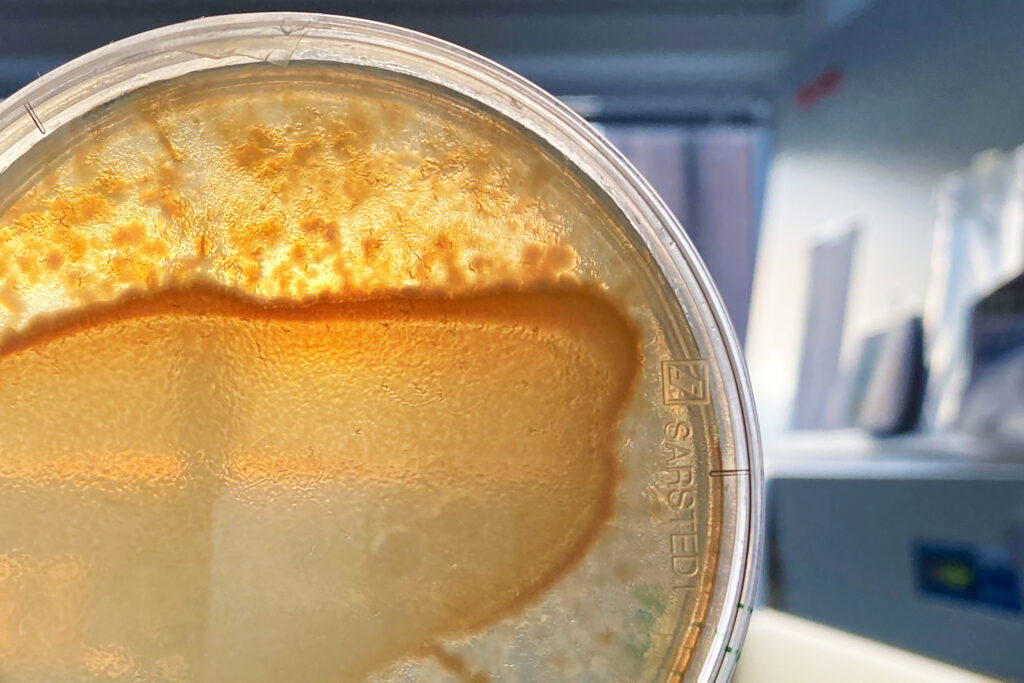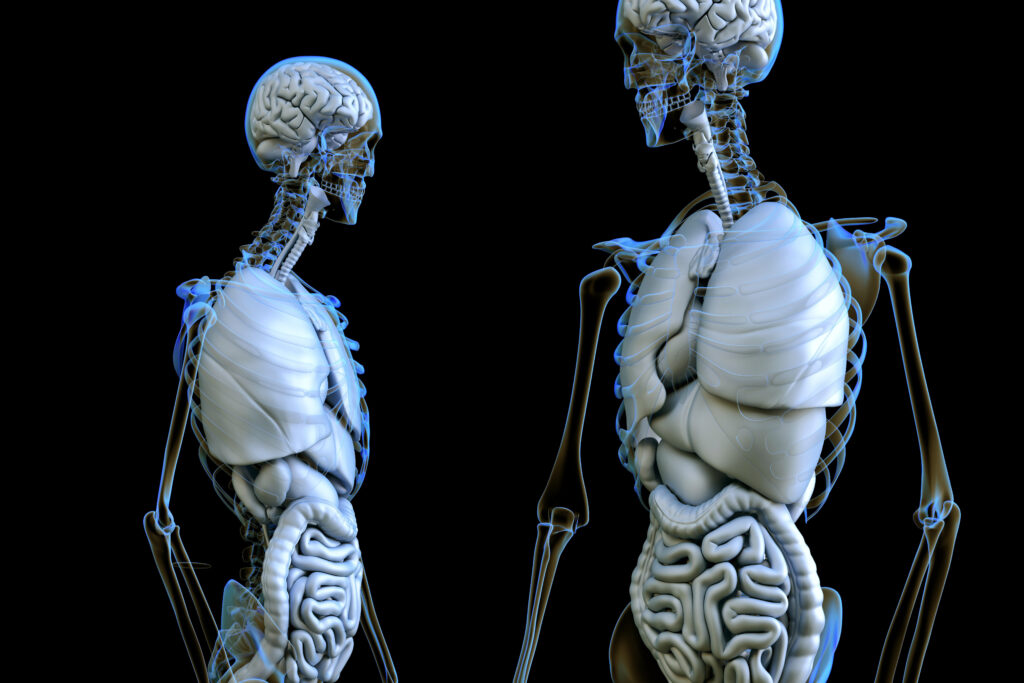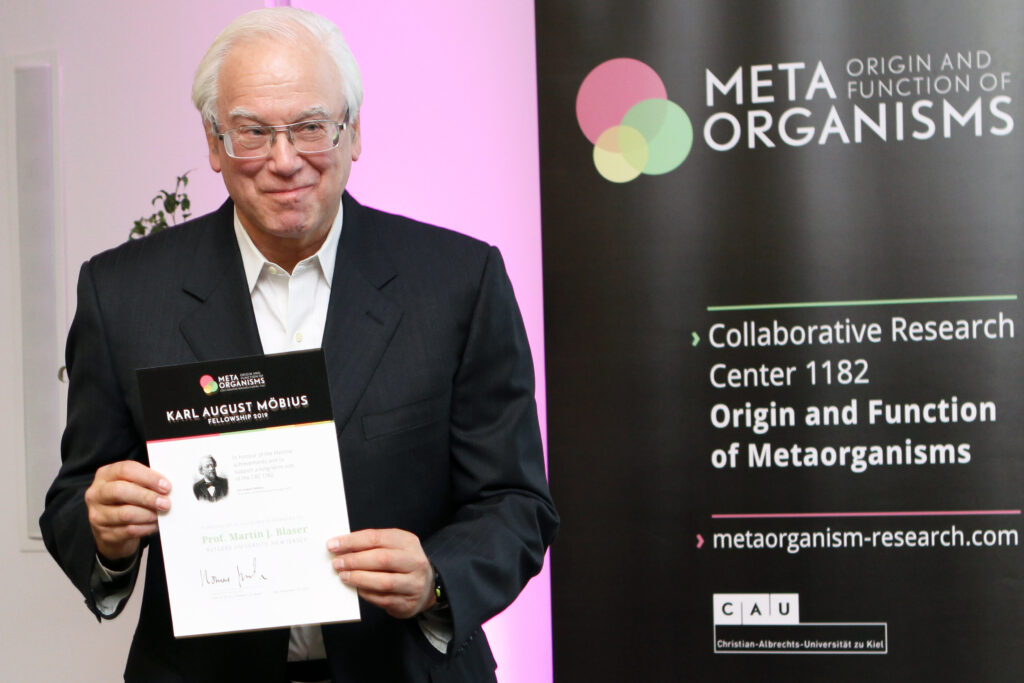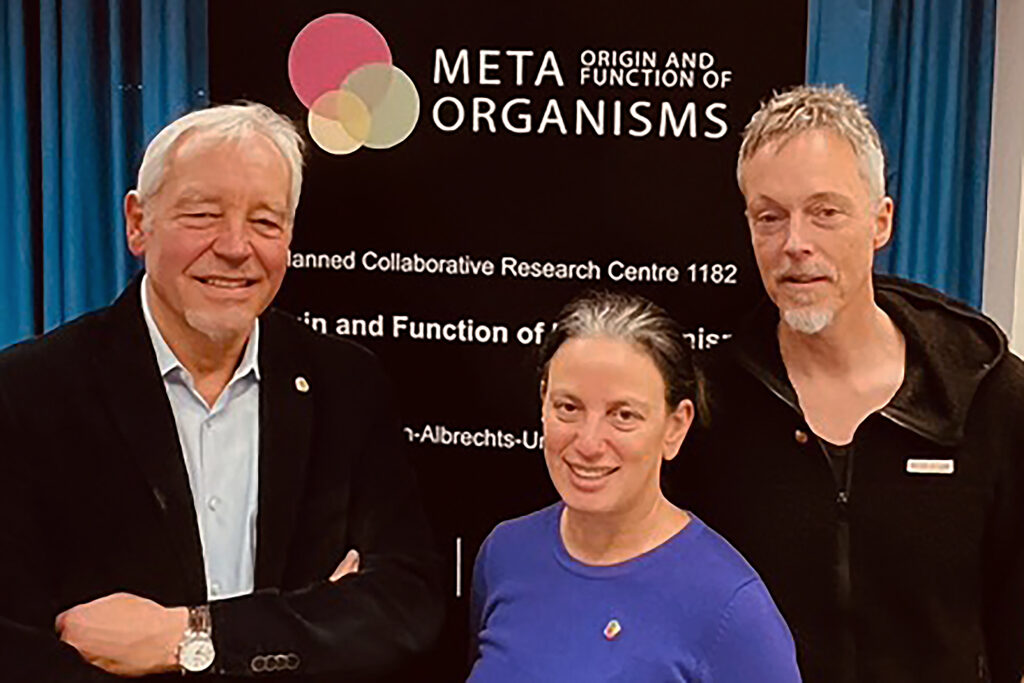The microbiome changes dynamically and favours important host-relevant functions
An interdisciplinary research team from the CRC 1182 is investigating the processes that control microbiome composition in host organisms using roundworms as example
All multicellular organisms – from the simplest animal and plant organisms to humans – live in close association with a multitude of microorganisms, the so-called microbiome, which colonise their tissues and live in symbiotic relationships with the host. Many vital functions, such as nutrient uptake, regulation of the immune system, or neurological processes, result from the interactions between the host organism and microbial symbionts. The functional cooperation between host and microorganisms, which scientists refer to as a metaorganism, is being investigated in detail at Kiel University in the Collaborative Research Center (CRC) 1182 “Origin and Function of Metaorganisms”.
Scientists suspect that the microbiome can significantly contribute to the environmental adaptation and fitness of an organism as a whole. They see one reason for this in the rapid adaptability of microorganisms, which can react many times faster to changing environmental conditions than the usually slower-evolving host organisms. How the colonisation and composition of the microbiome are established during the individual development of the host organism is the subject of current research.
A team from the Evolutionary Ecology and Genetics research group led by Professor Hinrich Schulenburg at the Zoological Institute at Kiel University, together with other research groups from the CRC 1182 from different faculties and the Max Planck Institute for Evolutionary Biology in Plön, has now investigated the dynamics of microbiome colonisation. They found that the microbiome in the nematode’s host organism does not have a random composition over a large period of its lifetime, which suggests that the microbial community is the result of directed selection processes. This assumption is supported by genome analysis of the microbial species in the worm microbiome. Numerous genes were found that are responsible for certain metabolic functions that are important for the host organism and are also relevant in other organisms. With these results, the Kiel researchers once again show that the roundworm Caenorhabditis elegans is particularly well suited as an informative model organism for researching the gut microbiome. The CRC 1182 researchers recently published their results in the scientific journal mBio.
Dynamics of microbiome composition over the lifetime of the nematode
In order to study the development of microbiome composition in C. elegans over time, Dr. Agnes Piecyk, a former researcher in the Evolutionary Ecology and Genetics group, who planned and led the experiments, used a characteristic community of 43 different bacterial species that are typically found in the nematode in nature. She introduced this microbial community into previously germ-free animals and colonized them on a culture medium in the direct vicinity of the worms and in separate Petri dishes without any contact with the animals. The researchers then analysed how the composition of this experimental microbial community changed under various conditions over the course of around a week at six individual points in time – which corresponds to the average lifespan of the threadworms.
In the course of the experiment, it became apparent that time only played a prominent role in the host-associated microbial communities, i.e. the bacteria living in the worms: “Their composition changed in such a way that some specific bacterial species appeared more frequently,” says Dr Johannes Zimmermann, also a researcher in the Evolutionary Ecology and Genetics working group, who analysed the data. For example, Ochrobactrum and Enterobacter bacteria accumulate in the worm’s gut. “These dynamics cannot be convincingly explained by stochastic, i.e. in principle random, processes. We therefore wanted to find out whether there might be directed processes involved in the dynamic change of the worm microbiome over time,” explains Zimmermann.
Genome analysis indicates the selection of certain useful metabolic functions
In the next step, the research team analysed the genomes of the microorganisms in the worm microbiome containing all the genetic information of the bacterial communities over the worms’ lifespan. Interestingly, the researchers found some striking similarities between host-associated microbial communities with genes known from human microbiome research. “We hypothesize that this is not due to chance but is driven by specific interactions between host and microbiome that affect the microbiome composition at certain points in the host’s lifespan. A very plausible explanation for the accumulation of certain bacterial species in the worms compared to the control groups could therefore be that the host specifically selects certain bacteria and the functions associated with them, which in turn are advantageous for the host organism,” emphasises Zimmermann. This hypothesis is further supported by the fact that the favourable microbial functions are universal and go beyond C. elegans, for example, the production of short-chain fatty acids, vitamin B12, or other vital substances.
Model organism for gut microbiome research
Overall, the researchers conclude that due to the dynamics of the microbiome composition over the worm’s lifetime, the associated bacterial species evolved certain competitive strategies and that, in particular, those species are favoured that provide certain useful functions to the host. In conclusion, the colonising microorganisms, therefore, seem to be beneficial to the host organism overall and thus help it to adapt to its environment.
“With our new work, we provide important conceptual foundations that expand our understanding of the composition and function of the microbiome and how the host organism influences its composition,” summarises CRC 1182 spokesperson Schulenburg. “Our study based on the experimental microbial community also shows once again that C. elegans provides us with a valuable model system that is also relevant for understanding fundamental processes in the human gut microbiome and their consequences for health and disease,” Schulenburg concludes.
Original publication:
Johannes Zimmermann, Agnes Piecyk, Michael Sieber, Carola Petersen, Julia Johnke, Lucas Moitinho-Silva, Sven Künzel, Lena Bluhm, Arne Traulsen, Christoph Kaleta, Hinrich Schulenburg (2024): Gut-associated functions are favored during microbiome assembly across a major part of C. elegans life. MBio
First published: 18. April 2024 DOI: 10.1128/mbio.00012-24
Images are available for download:
www.uni-kiel.de/de/pressemitteilungen/2024/069-zimmermann-mbio-plate.jpg
Caption: The research team observed how a community of 43 different bacterial species developed in the host organism, on a culture medium in the direct environment of the worms and in separate Petri dishes without any contact with the animals.
© Dr Johannes Zimmermann
www.uni-kiel.de/de/pressemitteilungen/2024/069-zimmermann-mbio-plate.jpg
Caption: The researchers of the CRC 1182 propose C. elegans as a model system to understand fundamental processes in the human gut microbiome and their consequences for health and disease.
© Prof. Hinrich Schulenburg
Contact:
Prof. Hinrich Schulenburg
Research Group Evolutionary Ecology and Genetics, Head
Zoological Institute, Kiel University
Tel.: 0431-880-4141
E-Mail: hschulenburg@zoologie.uni-kiel.de
More information:
Research Group Evolutionary Ecology and Genetics,
Zoological Institute, Kiel University:
www.uni-kiel.de/zoologie/evoecogen
Max Planck Institute for Evolutionary Biology, Plön:
www.evolbio.mpg.de





